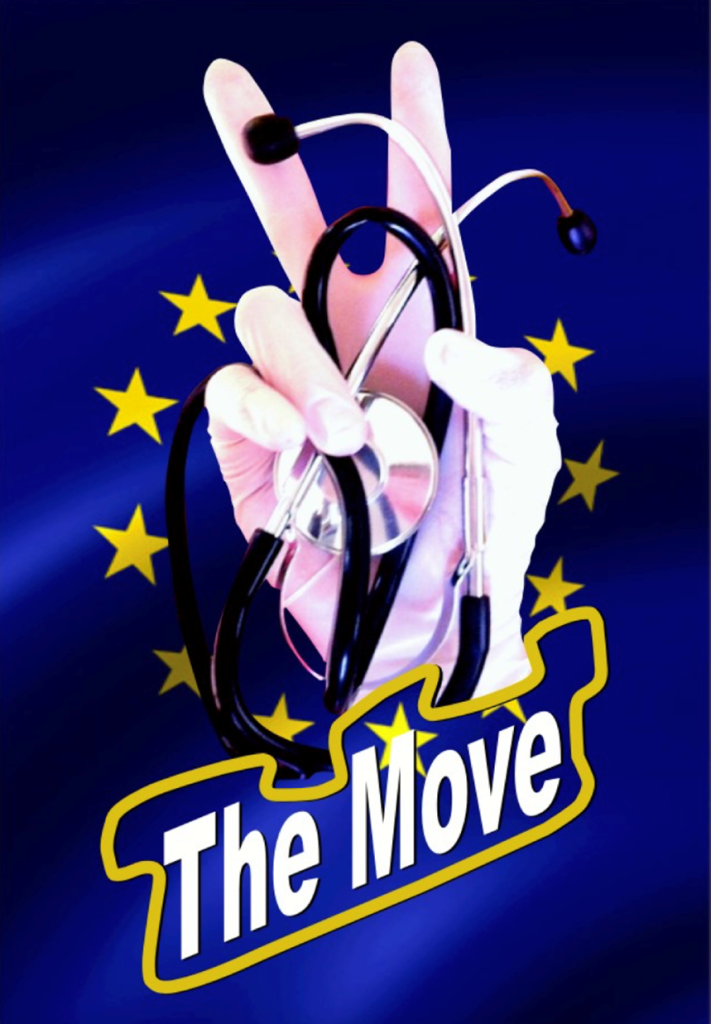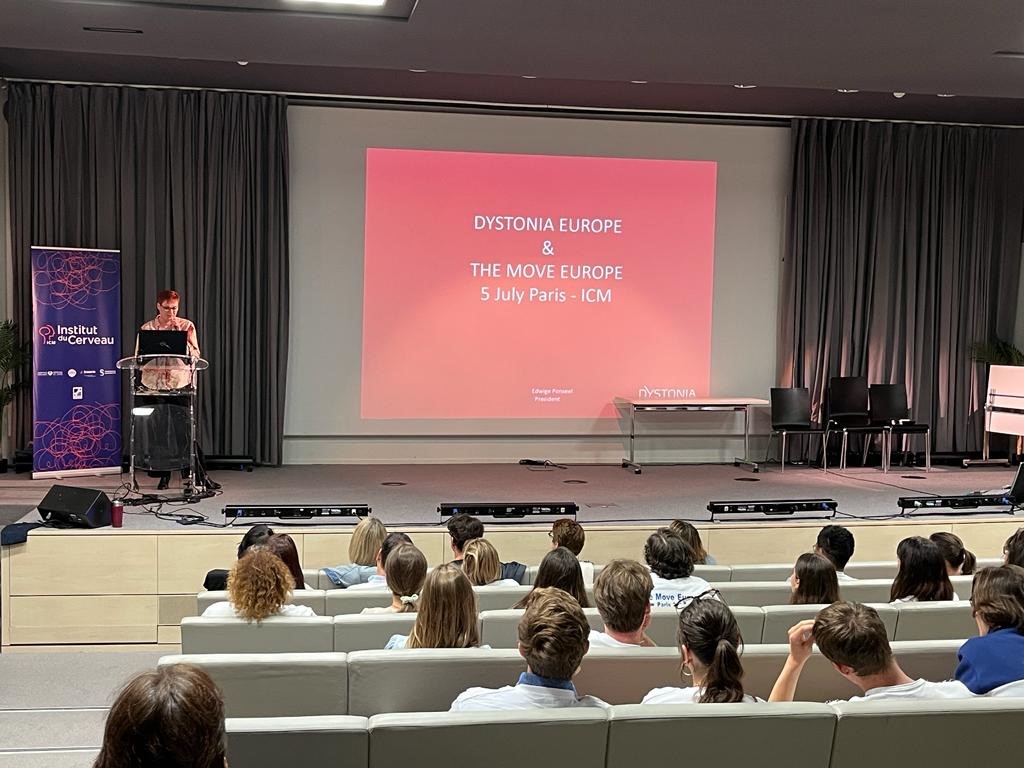
On July 5 I was invited by Pr E. Flamand-Roze, neurologist at the Pitié-Salpêtrière Hospital, Paris, and co-creator of The Move program, to speak at the introduction of the competition.
The Move Europe is an annual international tournament between 2nd and 3rd year medical students, who mime neurological syndromes in 5-minute sketches to learn about and recognize the diseases involved.
This friendly tournament, the 4th, which takes place at the end of the university year, follows the principle of “The Voice” (in mime), with students competing in “battles”, miming patients, in front of their coaches and a jury of professionals who judge them according to the neurological authenticity of their performance and the originality of the staging.
This makes learning about the major syndromes a joyful, modern experience. The students don’t make fun of patients. This program enables them to reinforce their clinical skills, interpersonal skills, how to behave with a neurology patient, understanding the patient’s perspective, and memorization through simulation. This teaching also combats neurophobia (fear of the neurology specialty and fear of coming face to face with patients suffering from neurological diseases).
This year, groups of students from France, Switzerland, Vietnam and Italy met.
After introducing myself I gave my testimony as a person living with dystonia, and talked about Dystonia Europe and projects.
Then I showed the video of this year’s awareness campaign with Adam Kalinowski, previous President, of an anecdote with cervical dystonia at the airport, which fitted the subject, funny and poignant at the same time: “Welcome”. Adam, a patient, plays his own role in the story. As patients, we also use humor to communicate about the disease.
I reminded that, even with a neurological disorder, we are all individuals, with our own lives and our own particularities, and that chronic illness cannot define us.
It was my pleasure to congratulate them all on their involvement, their interest, their motivation for neurology and their dynamism. I hoped they would become our future caregivers. I also invited them to come and challenge me during the breaks to see if they could mimic cervical dystonia as well as I could!
It was a great opportunity to meet some amazing, interested young people full of questions during the breaks. These committed, serious and studious young people are a source of joy and hope for the future. As they only came across serious hospital cases, they were also full of questions about moderately disabled or active patients. One of them was suffering from writer’s cramp.
The organizers and coaches do an incredible job of supporting and organizing the event.
I laughed, talked and smiled a lot during this day that I’ll remember for the rest of my life. What rich encounters, I left them at the end of the day with regrets.
I’d like to end this story with a special mention to the team from Angers, France, who were particularly inventive, fun, communicative and relevant.
Take care of yourselves, youngsters, as you’ll be able to take care of us later on!
Edwige Ponseel, President Dystonia Europe


